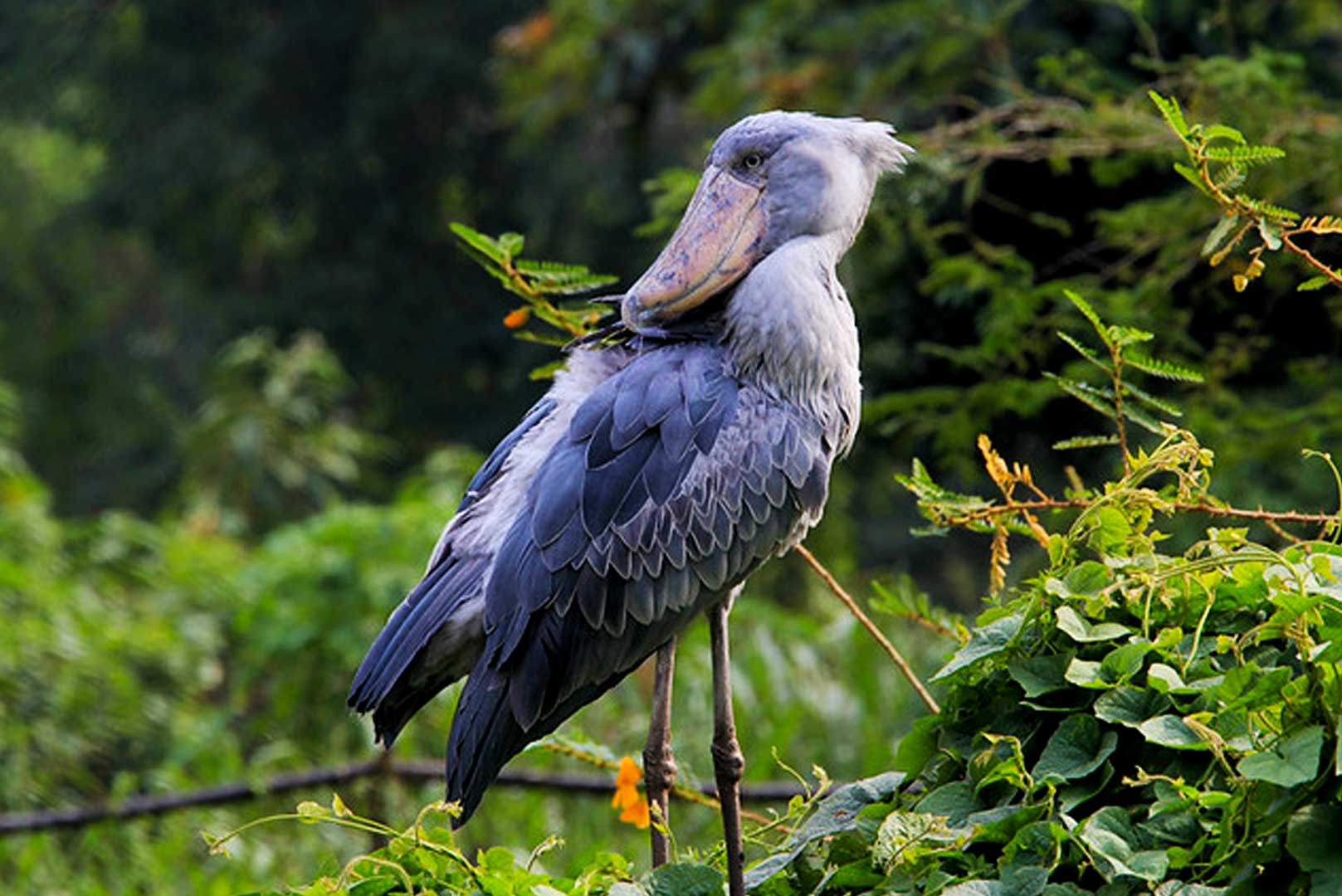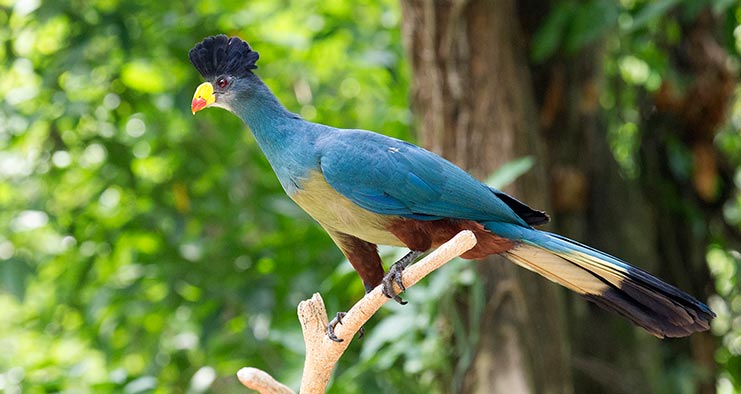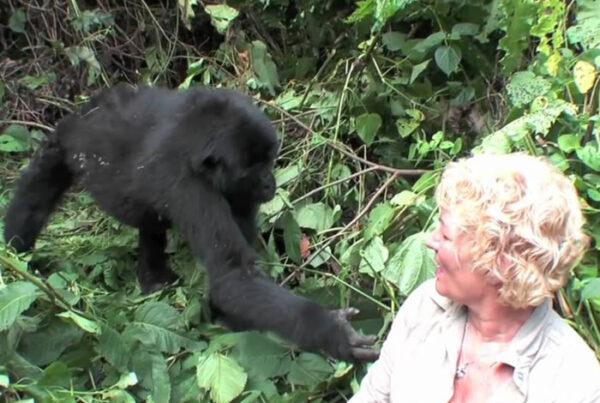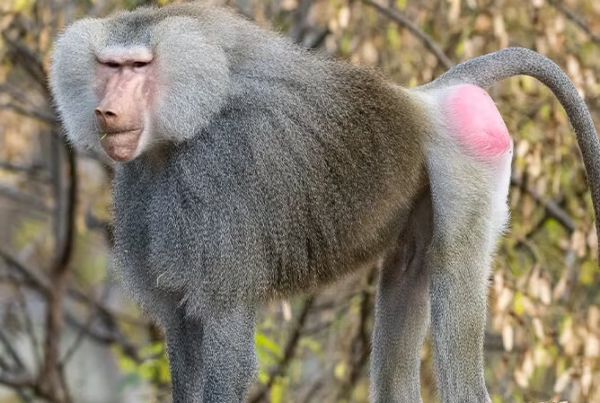What are the best places in Uganda for birdwatching? | Best Birdwatching Places in Uganda | Top Birding Destinations and Parks
Few destinations in Africa rival Uganda when it comes to birdwatching. With over 1,080 bird species recorded across its landscapes — nearly half of Africa’s total — the country is an avian paradise where tropical forests, vast wetlands, mountain ranges, and open savannahs converge to create a mosaic of habitats. It is no wonder Uganda is often referred to as the “Birder’s Eden of Africa.” From the haunting call of the African Fish Eagle over Lake Victoria to the elusive beauty of the Shoebill Stork in the papyrus swamps of Mabamba, every region unfolds like a living field guide, filled with color, sound, and wonder.
For both seasoned ornithologists and casual nature lovers, birding in Uganda is not just a pursuit — it is a profound encounter with one of the world’s richest concentrations of birdlife. Every dawn brings a new chorus, every trail a new discovery. But to experience the best of this diversity, it is essential to know where to go and why each place holds its unique ornithological magic.
This in-depth guide explores the best birdwatching destinations in Uganda, revealing their habitats, signature species, and seasonal highlights. It is a journey through wetlands and forests, mountain slopes and crater lakes — a narrative that unites the science of ecology with the art of wonder.
The Ecological Tapestry Behind Uganda’s Bird Diversity
Uganda’s exceptional birdlife stems from its location at a crossroads of Africa’s major biomes. The country straddles the Equator and lies within the Albertine Rift, a biodiversity hotspot that links Central and East African ecosystems. This geographic position allows Uganda to host species from the eastern savannah, the western Congo forests, the northern semi-arid zones, and the southern highlands — all within a relatively compact area.
Altitude plays a key role. From the low-lying Albert Nile at around 600 meters above sea level to the snowcapped peaks of the Rwenzori Mountains surpassing 5,000 meters, each elevation harbors distinct avian communities. The country’s numerous wetlands, lakes, and rivers, including Lake Victoria, Lake Albert, and the Kazinga Channel, attract countless waterbirds and migratory species from Europe and Asia.
This ecological richness makes Uganda a year-round destination for birdwatching. While migratory species peak between November and April, resident birds can be seen in abundance throughout the year, especially during and just after the rainy seasons when breeding plumage transforms the landscape into a canvas of vibrant life.
From the depths of tropical forests to open savannah plains, Uganda’s natural orchestra of feathers and song beckons those who listen closely.
Mabamba Bay Wetland – The Kingdom of the Shoebill
The story of birding in Uganda almost always begins at Mabamba Bay, a vast papyrus wetland located on the northern shores of Lake Victoria, about an hour’s drive from Entebbe. Mabamba is internationally renowned as one of the most reliable places in Africa to see the Shoebill Stork (Balaeniceps rex) — a prehistoric-looking bird that stands nearly five feet tall, with a shoe-shaped bill and piercing gaze that seems to belong to another era.
The wetland is accessed by wooden canoes that glide quietly through narrow channels surrounded by papyrus and reeds. The stillness is broken only by the call of Malachite Kingfishers, the flitting of Blue-breasted Bee-eaters, and the soft rustle of fish jumping beneath the water’s surface. As the canoe drifts, birders scan the edges of floating vegetation for the Shoebill’s unmistakable silhouette — often seen standing motionless as it hunts lungfish, its preferred prey.
Beyond the Shoebill, Mabamba hosts over 300 bird species, including Papyrus Gonolek, African Jacana, Purple Swamphen, and Goliath Heron. The wetland’s proximity to Entebbe makes it an ideal starting point for any birding itinerary, offering both accessibility and iconic sightings that set the tone for the adventures ahead.
Bwindi Impenetrable National Park – The Heart of the Albertine Rift Endemics
In the southwestern highlands, where mist clings to ancient trees and sunlight filters through emerald leaves, lies Bwindi Impenetrable National Park — a UNESCO World Heritage Site famous not only for its mountain gorillas but also as a sanctuary for rare and endemic birds. Bwindi’s unique location within the Albertine Rift gives it the highest concentration of forest bird species in East Africa, with over 350 species recorded, including 23 Albertine Rift endemics found nowhere else on Earth.
The forest’s dense canopy and layered vegetation support species such as the African Green Broadbill, Shelley’s Crimsonwing, and Grauer’s Swamp Warbler — elusive treasures for dedicated birders. Other highlights include the Bar-tailed Trogon, Blue-headed Sunbird, Kivu Ground Thrush, and the Black Bee-eater.
Birding in Bwindi often takes place along well-established trails in sectors like Buhoma, Ruhija, and Nkuringo, each offering different elevations and habitats. The Buhoma Waterfall Trail, for instance, meanders through lowland forest rich in mixed flocks, while the Mubwindi Swamp in Ruhija is known for sightings of Grauer’s Broadbill, one of Africa’s most sought-after birds.
Bwindi’s atmosphere enhances the experience. The calls of Turacos, the drumming of Woodpeckers, and the flutter of Sunbirds create a symphony that feels eternal — a living echo of evolution’s artistry.
Queen Elizabeth National Park – Where Savannah Meets Wetland
In the western region of Uganda, stretching between Lake George and Lake Edward, lies Queen Elizabeth National Park, a mosaic of ecosystems that combines open grasslands, forests, lakes, and volcanic craters. This variety makes it one of the richest birding destinations in Africa, boasting over 600 recorded species — more than any other national park on the continent.
The park’s Kazinga Channel, a natural waterway connecting the two lakes, attracts vast congregations of waterbirds. Pelicans, cormorants, and African Skimmers line the shores, while Pink-backed Pelicans and Yellow-billed Storks wade gracefully in the shallows. A boat cruise along the channel offers close encounters with Kingfishers, Jacanas, African Fish Eagles, and Marabou Storks.
In the savannah plains of the Kasese and Ishasha sectors, birders may find Secretary Birds, Crowned Lapwings, and Martial Eagles soaring above the acacia trees. Forested sections such as Maramagambo and Kyambura Gorge provide a contrasting environment where forest species like Black Bee-eaters, African Finfoots, and Narina Trogons thrive.
Queen Elizabeth’s diversity captures the essence of Uganda’s birdlife — a dynamic meeting of wetlands, woodland, and wilderness in perpetual motion.
Murchison Falls National Park – The Birdlife Along the Nile
Flowing majestically through northern Uganda, the Nile River defines the character of Murchison Falls National Park, the country’s oldest and largest protected area. Known for its dramatic waterfall where the Nile squeezes through a 7-meter gorge before plunging 45 meters, the park is also a haven for over 450 bird species.
Birding here is as spectacular as the scenery. Along the riverbanks, Goliath Herons, Saddle-billed Storks, and African Fish Eagles can be seen effortlessly hunting. The wetlands host African Jacanas and Pied Kingfishers, while the open savannahs teem with Abyssinian Ground Hornbills, Silver Birds, and Denham’s Bustards.
The park is also one of the best places in Uganda to spot the Shoebill, particularly in the delta area where the Nile enters Lake Albert. Early morning boat rides offer the best chance to observe this elusive bird, along with hippos and crocodiles basking along the water’s edge.
The combination of water, woodland, and grassland habitats makes Murchison Falls an unrivaled destination for birders who wish to blend wildlife photography with birdwatching. It is a place where elephants share the same view as herons and where the roar of falling water harmonizes with the call of a distant eagle.
Kibale Forest National Park – The Realm of Forest Canopy Birds
Known globally as the Primate Capital of the World, Kibale Forest National Park is also a premier birding destination, harboring more than 370 bird species. The park’s dense tropical forest, interlaced with swamp and woodland edges, supports both lowland and highland avifauna.
Among Kibale’s highlights are the African Pitta, a brightly colored and rare migrant that appears after the rains, and the Green-breasted Pitta, one of Africa’s most desired sightings. The Great Blue Turaco, Black-capped Apalis, and Yellow-spotted Barbet add splashes of color to the canopy, while the soft whistle of the Grey-throated Flycatcher echoes in the understory.
Birding often begins near Kanyanchu Visitor Center, where the forest trails reveal both avian and primate encounters. Mixed flocks of Sunbirds, Weavers, and Robin-Chats animate the treetops, while butterflies dance in the filtered light. The nearby Bigodi Wetland Sanctuary, managed by the local community, complements the forest experience, offering sightings of Papyrus Gonoleks, Speckled Mousebirds, and White-winged Warblers.
Kibale’s birding experience feels intimate — a quiet communion beneath towering trees, where every call becomes a whisper of the wild.
Semuliki National Park – The Congo’s Influence in Uganda
In the far west of Uganda, near the border with the Democratic Republic of Congo, lies Semuliki National Park, one of the most unique birding destinations in the country. This lowland forest forms part of the vast Ituri rainforest system, giving it a distinctly Central African character.
Over 440 bird species have been recorded here, including many that are rare or entirely absent from other parts of East Africa. Species such as the Congo Serpent Eagle, Long-tailed Hawk, Yellow-throated Nicator, and White-crested Hornbill draw serious birders from across the world.
The Sempaya Hot Springs area provides accessible trails for spotting forest birds, while the nearby Semuliki River floodplains support water-associated species. Early mornings in the forest are filled with the rhythmic drumming of Woodpeckers, the chatter of Broadbills, and the haunting cry of the Nkulengu Rail.
Semuliki feels like stepping into another world — humid, green, and alive with sound. It bridges Uganda’s eastern and western birding realms, providing a glimpse into the Congo’s hidden avian treasures.
Kidepo Valley National Park – Wilderness and Raptors of the North
In the far northeastern corner of Uganda, bordering South Sudan and Kenya, Kidepo Valley National Park stands as one of Africa’s most remote and scenic wildernesses. Its vast plains and rugged mountains host over 475 bird species, making it one of the most rewarding yet least visited birding areas in the country.
Kidepo’s semi-arid landscape offers a sharp contrast to Uganda’s humid forests, supporting species more typical of East Africa’s dry savannah. Iconic sightings include the Ostrich, Kori Bustard, Secretary Bird, and Carmine Bee-eater. Raptors dominate the skies — Bateleurs, Verreaux’s Eagles, and Pygmy Falcons soar above the Narus and Kidepo Valleys.
The park’s open terrain allows for uninterrupted observation, especially at dawn and dusk when birds of prey hunt and ground dwellers emerge. Kidepo’s remoteness adds a sense of purity to birding — no crowds, no noise, just the unbroken silence of Africa’s frontier.
For travelers seeking a true wilderness experience where birds and landscapes blend into one timeless scene, Kidepo remains unmatched.
Mgahinga Gorilla National Park – The Highlands of Volcano Birds
Tucked in Uganda’s southwestern corner, Mgahinga Gorilla National Park forms part of the Virunga Volcano Range, a dramatic series of peaks shared with Rwanda and the Congo. Despite being the smallest national park in Uganda, it offers exceptional birdwatching opportunities, particularly for high-altitude species.
The park’s bamboo and montane forest zones support over 180 bird species, including several Albertine Rift endemics such as the Dusky Crimsonwing, Ruwenzori Turaco, and Collared Apalis. The Ruwenzori Double-collared Sunbird and Brown-capped Weaver dazzle the highlands with their iridescent plumage.
Hiking the slopes of Mount Sabinyo or Mount Gahinga brings encounters with mixed flocks that shimmer through the mist. The trails also reveal panoramic views of the Virunga volcanoes, often accompanied by the melodic calls of White-starred Robins and Mountain Yellow Warblers.
Mgahinga’s birdlife feels ethereal, perched between earth and cloud, where every sighting carries a sense of quiet triumph.
Lake Mburo National Park – The Savannah’s Feathered Mosaic
Conveniently located between Kampala and southwestern Uganda, Lake Mburo National Park offers a compact yet vibrant birding experience. Its mosaic of lakes, acacia woodland, and open plains supports over 320 bird species, many of which are easily observable from both land and water.
African Finfoot, White-backed Night Heron, and Papyrus Yellow Warbler are among the park’s specialties. The lake shores teem with Cormorants, Herons, and Kingfishers, while the acacia woodlands echo with the calls of Crested Francolins and Emerald-spotted Wood Doves.
A boat trip on Lake Mburo allows birders to spot African Fish Eagles, Malachite Kingfishers, and Yellow-billed Storks at close range. The park’s accessibility and compact size make it ideal for relaxed birdwatching, especially for travelers with limited time.
Lake Mburo proves that one need not venture far from the main highways to find Uganda’s feathered wonders.
Seasonal Birding and Migration Highlights
Uganda’s birdlife shifts with the seasons, creating different spectacles throughout the year. From November to April, migratory birds from Europe and northern Africa join the local populations, filling wetlands and lakes with species like White-winged Terns and Swallows.
The breeding season, coinciding with the rains between March and May and September and November, transforms the forests and grasslands into colorful theaters of display. Males don their brightest plumage, perform elaborate courtship dances, and fill the air with song.
For those seeking the highest diversity, the dry months of June to August and December to February offer clearer trails and easier access to remote areas, especially in forested regions like Bwindi and Kibale.
Regardless of timing, Uganda rewards patience — the art of waiting and listening until the forest reveals its secrets.
Conclusion: A Symphony of Wings and Wonder
To watch birds in Uganda is to witness the harmony of life itself — where color, song, and movement blend into a living masterpiece. From the prehistoric poise of the Shoebill to the delicate shimmer of the Green-breasted Pitta, every sighting feels personal, earned, and profound.
Uganda’s birdwatching destinations form a journey through time and terrain — from the lowland swamps of Mabamba to the cloud forests of Bwindi and the golden savannahs of Kidepo. Each region offers not just species but stories, inviting travelers to see the land through the eyes of its winged inhabitants.
For those who wish to experience this avian paradise with expert guidance, it is recommended to book your Africa tours and safaris with WildHorn Africa. Their deep knowledge of birding routes, experienced guides, and commitment to responsible travel ensure that every moment spent in Uganda’s wilderness becomes unforgettable.
Because in Uganda, birdwatching is not just an activity — it is a dialogue with nature, a celebration of creation, and a reminder that true freedom often wears feathers.





 WildHorn Africa – Authentic and unforgettable tours across Africa, guided by local experts who know the land, wildlife, and culture best.
WildHorn Africa – Authentic and unforgettable tours across Africa, guided by local experts who know the land, wildlife, and culture best.


